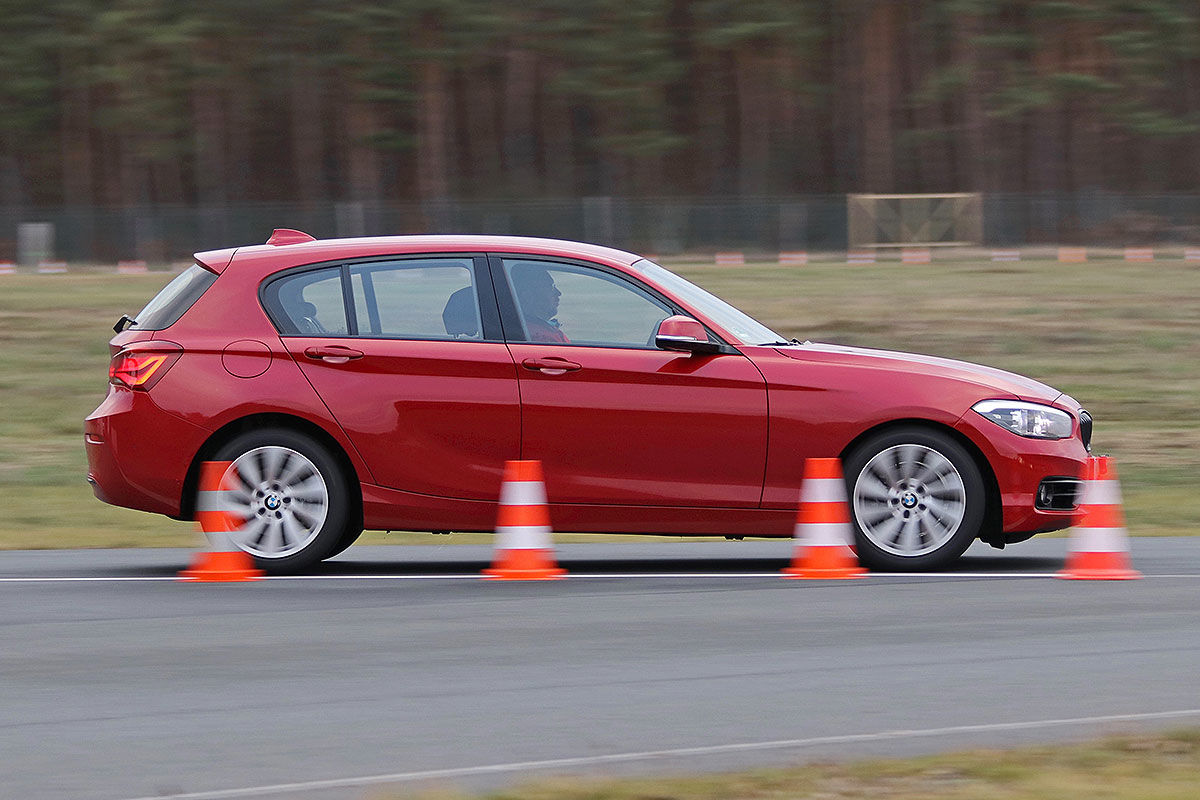Nitrogen fill removes the water vapour giving less pressure variation over temperature.
But you already know that…
German TUV seems to think Nitrogen makes no real difference for domestic motoring application
In aviation it’s used to help prevent ice crystals forming in one area of a tyre and causing an imbalance which would be undesirable…

Previous gen 1 Series, so RWD but maybe nearly 1500kg.
Continental Premium Contact 6 featured in the test and appear to be widely available but the Continental Eco Contact 6 that Nick mentioned seem to be a bit like hens teeth.
So one more question. If I decide to go for the Uniroyal Rainsport 3 I’m finding them online in V and Y rating rather than W. Is there any reason why I shouldn’t fit the slightly cheaper V rated ? It’s still rated at 149mph, well above the top speed of my car.
Please forgive my ignorance, but I’m a little confused here.
I’m the proud owner of my first mx5 a 30th AE
Why the heck would Mazda produce such an edition, with all the nice upgrades, 180+ bhp, Bilsteins, Rays etc. And then choose dodgy tyres?
They presumably could have specified any Japanese make e.g Yokohama
Are the Bridgestone tyres that bad?
It’s all a bit, disconcerting…
Steve
Hi S,
Stop worrying S there is nothing wrong with the Bridgestones.
They are a perfectly good tyre and have served many of us well. As you have read tyres are an emotive and personal choice so take everything you read with a big ‘reality pill’. There are certainly many more ‘worse’ tyres than the Bridgestones than there are ‘better’.
I did Croft this year in the dry and found that they behaved admirably when pushed to the extreme. Particularly impressed by straight line braking and initial turn in, but remember what I said earlier!!!
Enjoy your 30thAE as we are ours and just drive.
Straight answer, no.
However my previous car, a 2.0 NC Sport came from the factory on Continentals and felt much better when I swapped to Kumho KU39s.
My ND is on the original Bridgestones at the front and a replacement pair of the same on the rear. Everyone has their own opinion but most people seem to think there are alternatives that suit the car better. A lot depends on what you want from it. If it’s a garage queen that only comes out on the sunniest and driest day you would probably want something different than an all year round daily driver.
I would pay the extra if I regularly got my MX-5 up to 36,000 feet. But seeing as I have an air compressor in my garage I just check the tyre pressures on a regular basis instead.
Yes I did know that in the sense I’ve read it somewhere but I never heard the full explanation. It must be based on water vapour condensing/re-evaporating (as it well might considering the very low temperatures at 35,000 feet) otherwise as a gaseous mixture it would just follow Gay-Lussac’s law and the absolute pressure would vary directly with absolute temperature regardless of what gas it was. But dry air would be just as good.
Was there also something about nitrogen molecules being bigger than oxygen and therefore not escaping through the tyre wall as easily? I never really gave much credit to that, seeing that air is nearly 80% nitrogen anyway.
EDIT: Just had a look on pprune https://www.pprune.org/tech-log/573121-nitrogen-tyres.html#post9238710
An alleged quotation from a Boeing manual suggests that in aircraft it’s about reducing fire/explosion hazard. Not really applicable to cars I would suggest.
WARNING:
A TIRE MUST INITIALLY BE INFLATED WITH NITROGEN. IF TIRE WERE INFLATED WITH AIR, VOLATILE GASES GENERATED BY AN OVERHEATED TIRE COULD COMBINE EXPLOSIVELY WITH OXYGEN IN THE AIR INSIDE THE TIRE. A TIRE EXPLOSION CAN CAUSE DAMAGE TO EQUIPMENT AND/OR INJURIES TO PERSONS.
So just when I thought I had almost settled on Uniroyal Rainsport 3 I’ve just spotted that they have been replaced with Rainsport 5. Supposedly 15% improvement in wear. Of course the downside is that being newly released there aren’t any reviews. Suppose someone has to go first, probably me.
Further response to the “What’s wrong with Bridgestone” question. They are B rated for wet braking and F rated for fuel consumption. The Rainsports in both 3 and 5 variety are A for wet braking and C for fuel consumption.
Rainsport 5 in 205/45/17 Y speed rating at Tyre Shopper with the NOVDEAL5 discount code come in just under £90 each fully fitted.
I’m a Conti dealer. Just under £90 fitted is a totally normal price.
But what real life difference does it make to you other than the garage telling you it does? What is the pressure variation due specifically to water vapor in your tyres normally? 0.02psi? 25psi? Do cars come from the dealer with this miracle gas and what is the variation in the gas Law’s for atmospheric air over Nitrogen? Do you know the dew point of the air you normally put it? Do you get your wheels hot enough to turn the water vapor into stream in that closed system?
I once had a rep come in and extol the virtues of “Nitrogen Fill”. Bigger molecules! Less corrosion! better fuel economy! A Nitrogen molecule is 2.5% bigger than an Oxygen molecule, which is what you are replacing and both are miniscule. If Oxygen is escaping through the capping layer of the tyre there is far more to worry about that the size of molecules. I would be more concerned about how the valve is sealing than than premiation through the rubber. Corrosion, how wet is the air? Better fuel economy!!! You would get better economy if the pressure did go up stiffening the tyre and reducing rolling resistance. Do you wonder if they have totally evacuated the tyre of all air and moisture first or do you think they will have just fitted the tyre and then added the volume of nitrogen (or just told you they have) to the already trapped air? Evacuating the tyre is a complicated and time consuming, read expensive, process.
The bottom line from the salesman was "it’s a way to increase your profits by selling it (to uninformed people) and then charge them again when you tell them they have to keep their tyres topped up with Nitrogen and need to come back to you.
You will do so, so much better just keeping your tyres to the right pressure by regularly checking them and also that you will spot any issues far earlier than waiting for a problem to occur.
Nitrogen tyre fill - just another “must have” fad based on the false logic that if high-flying aircraft tyres need it, then it must have advantages for ground running tyres also! The only benefits are to the seller’s income!
I‘ve been a professional pilot since 1977. I have access to a portable nitrogen set at work, free of charge. The aircraft I fly does have pure nitrogen in its tyres but all my vehicle tyres get a mix of gases, including including about 78% Nitrogen. It generally stays in there without trouble.
Can’t really run to nitrogen filling as I’m a bit short of cash due to paying the 10% tax on the £250k that a nice Nigerian Prince is funneling my way. As soon as I get the cash I’ll be giving it a go.
Paul W, good to hear that you are a professional pilot. Could you give us the inside info on which airlines employ the unprofessional ones.
Roadie, I could but but I won’t. I don’t work for an airline, though.
